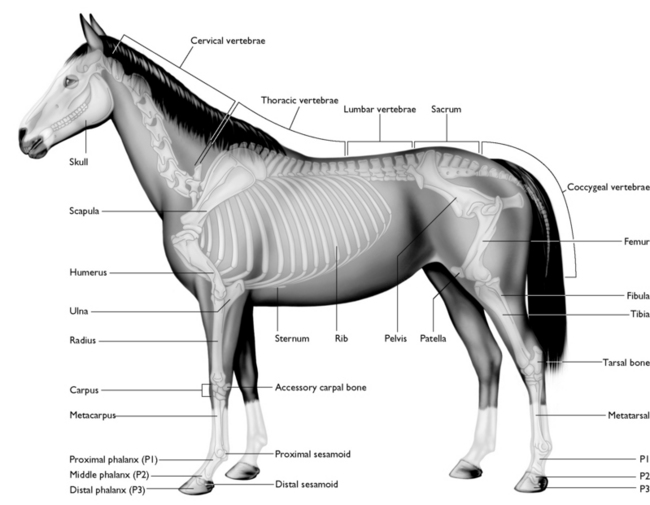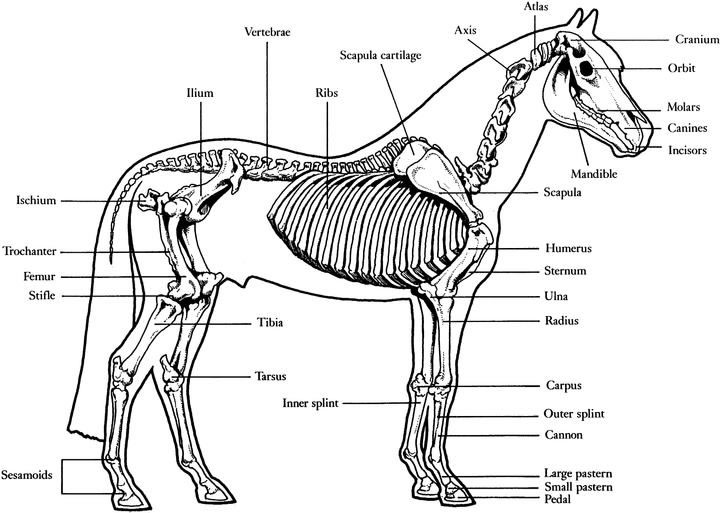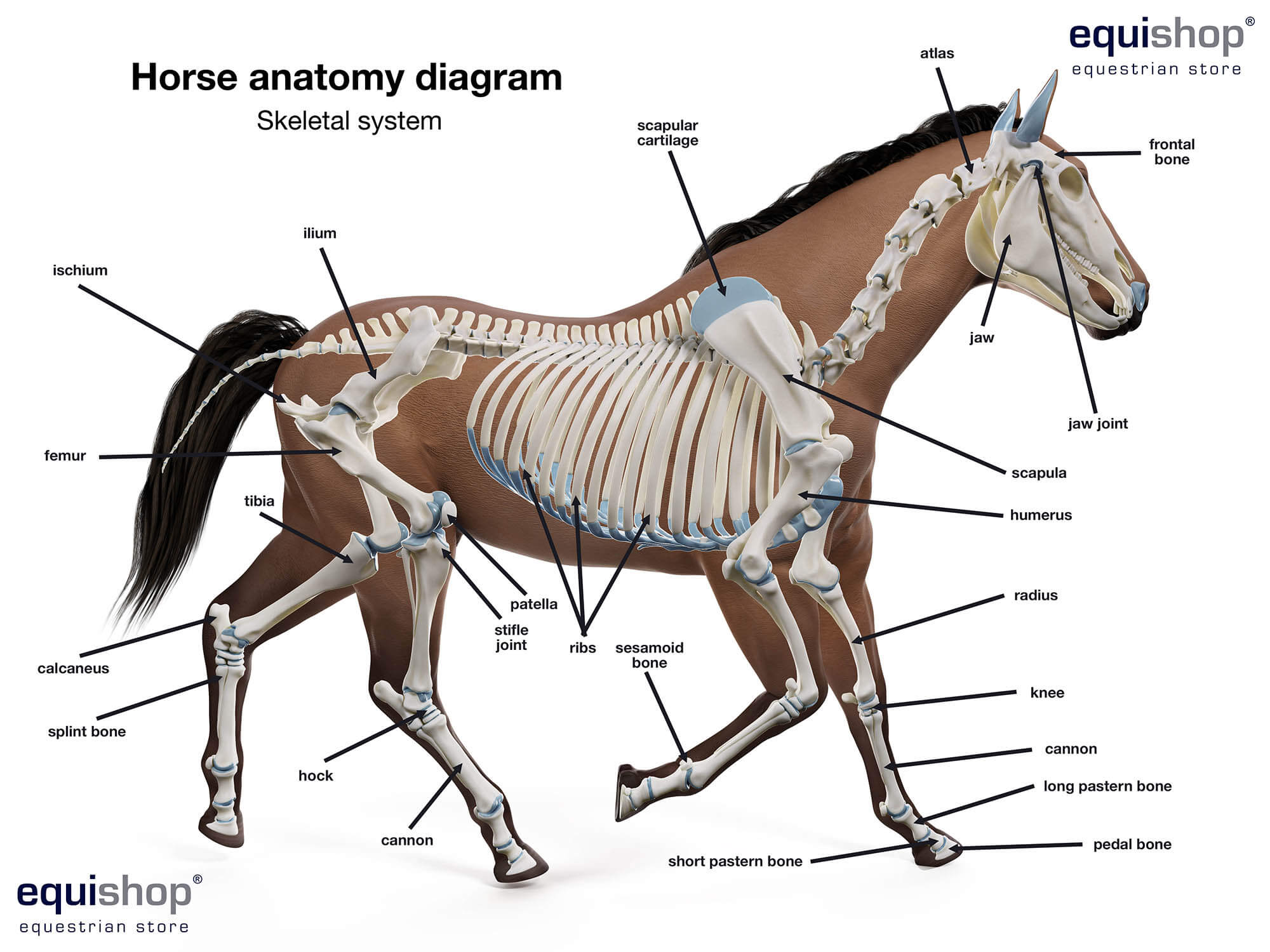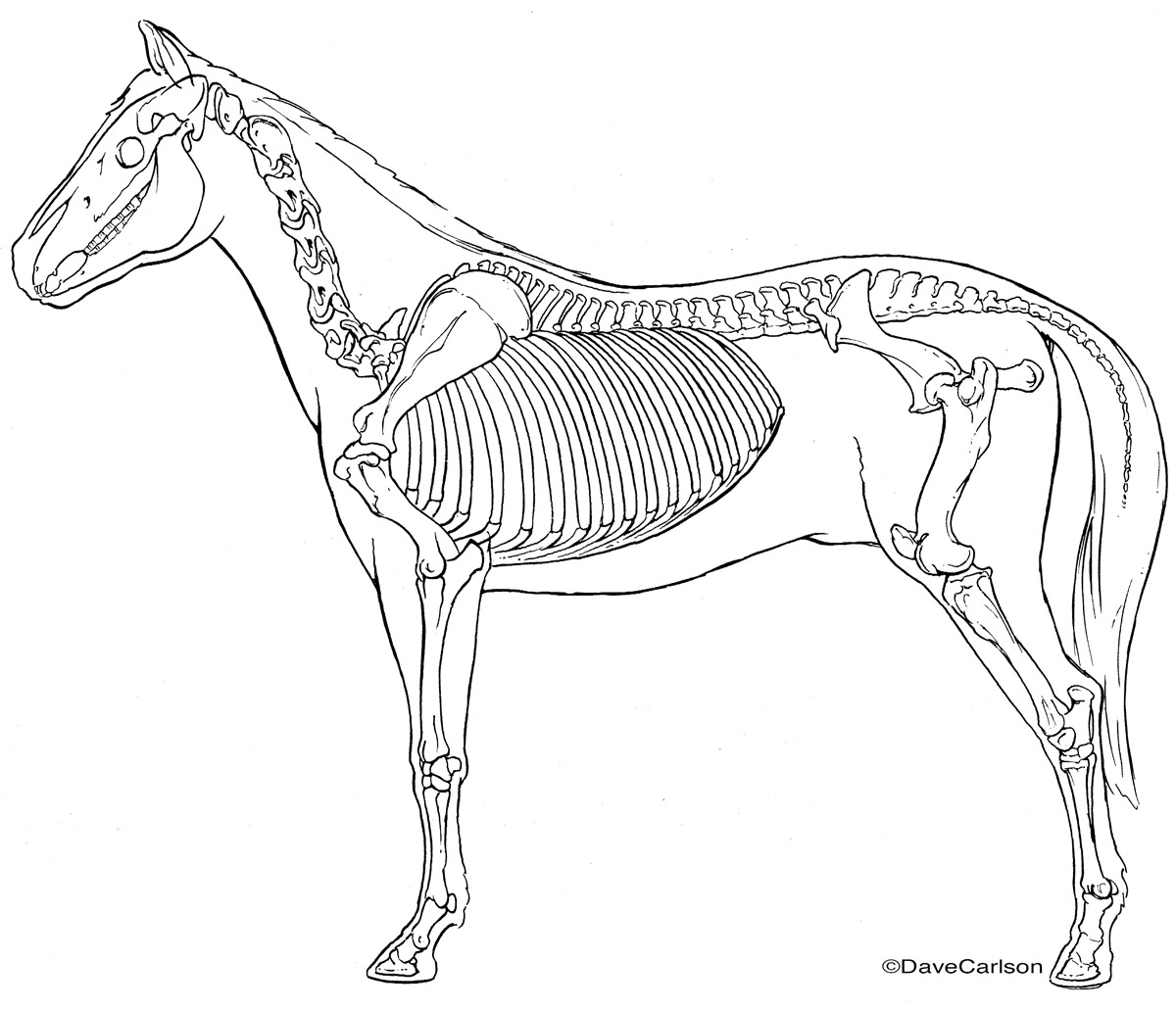There are two hundred and five (205) bones in the skeletal horse system. Please find the specific numbers of bones from the different region in the first question. Conclusion. I hope this simple guide might help you to get a basic idea of horse skeleton anatomy. Then, you might follow the horse skeleton model and labelled diagrams properly.. This is the basic and most important system of horse anatomy that you might not skip. You should learn all of the osteological features of horse bones. If you have good knowledge of general osteological features of animal bones (like – cow, goat, or sheep), you may easily compare the horse bones with them.. Please, try to identify all the.

This impressive digital artwork depicts the skeletal structure of a horse with inspiring depth

Horse Skeletal Anatomy Poster

Skeletal anatomy Horses, Horse anatomy, Horse camp

Horse Skeletal Structure by DarkKenjie on DeviantArt

Image Gallery horse skeletal system

The horse Veterian Key

The horse skeletal system stock illustration. Illustration of body 146236340

Equine Skeletal System Photograph by Samantha Elmhurst/science Photo Library

Skeletal System Of A Horse With Black Outline Side Perspective On White Background HighRes

Skeletal system of the horse Horse Choices

bones horse Horse anatomy, Horses, Anatomy

Horse Vertebrate Anatomy Diagram Of A Horse

Horse anatomy diagrams of horse body parts Equestrian Shop

Equine Superficial Muscular System Poster Muscular system, Equines, Equine veterinary

Science horse skeletal system Royalty Free Vector Image

Equine Anatomy and Physiology

Horse / Equine Skeleton B&W line art Lateral view Carlson Stock Art

Horse skeleton with animal skeletal system and bone anatomy outline diagram. Labeled educational

Science horse skeletal system Horse Body Parts Explain Etsy

Horse Anatomy Allpony
Muscle – most adaptive. Perhaps the most resilient of all the components of the musculoskeletal system, a horse’s muscles maintain a high degree of adaptive plasticity throughout their life. Muscles respond fairly quickly to increasing exercise demands through a number of physiological responses that result in improved strength and endurance.. Disorders of the musculoskeletal system most often affect the horse’s ability to move. How severely movement is impaired depends on the type and severity of the problem. Skeletal and joint disorders are the most common. In horses, musculoskeletal injuries are a major source of debilitating pain, financial loss, and loss of performance.


